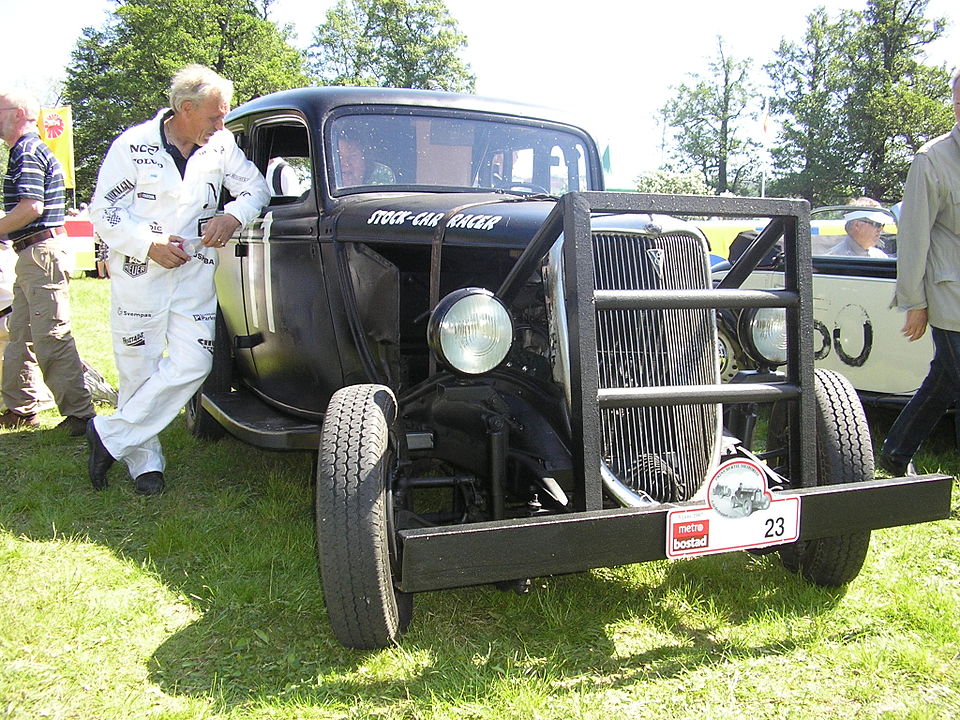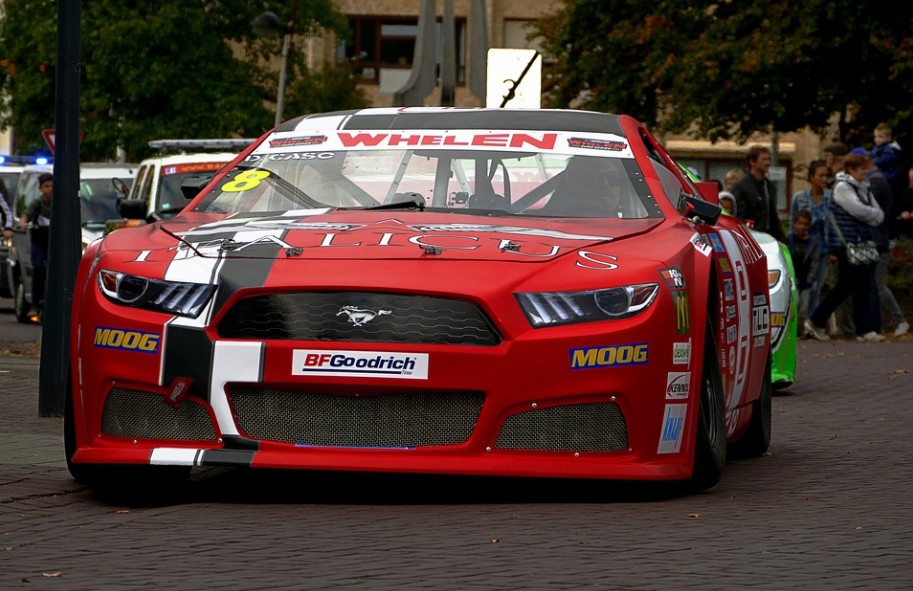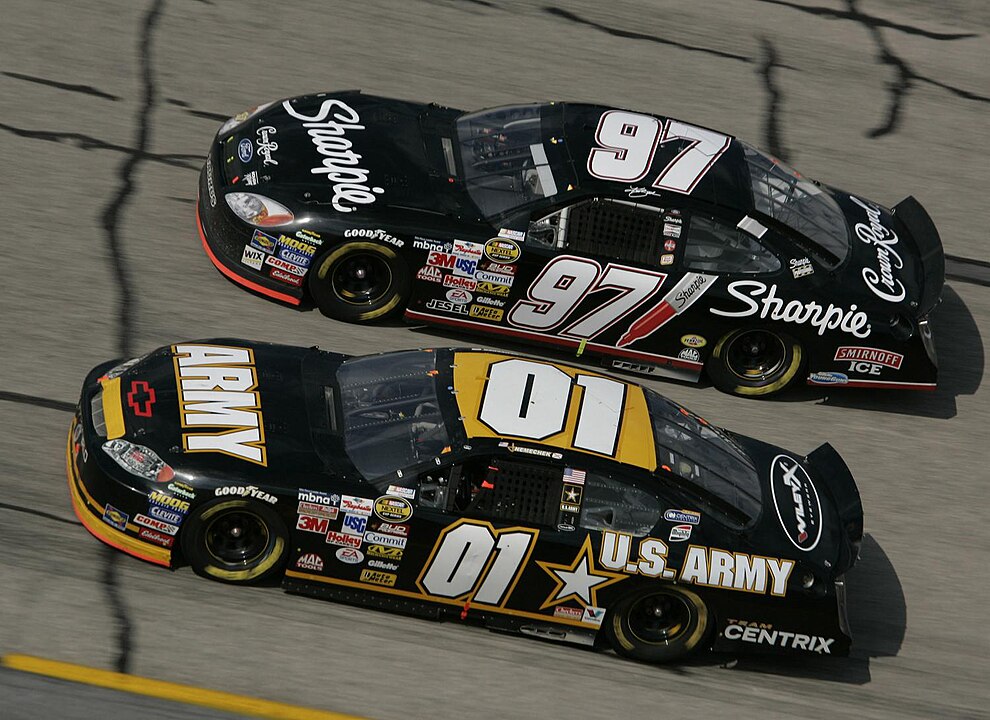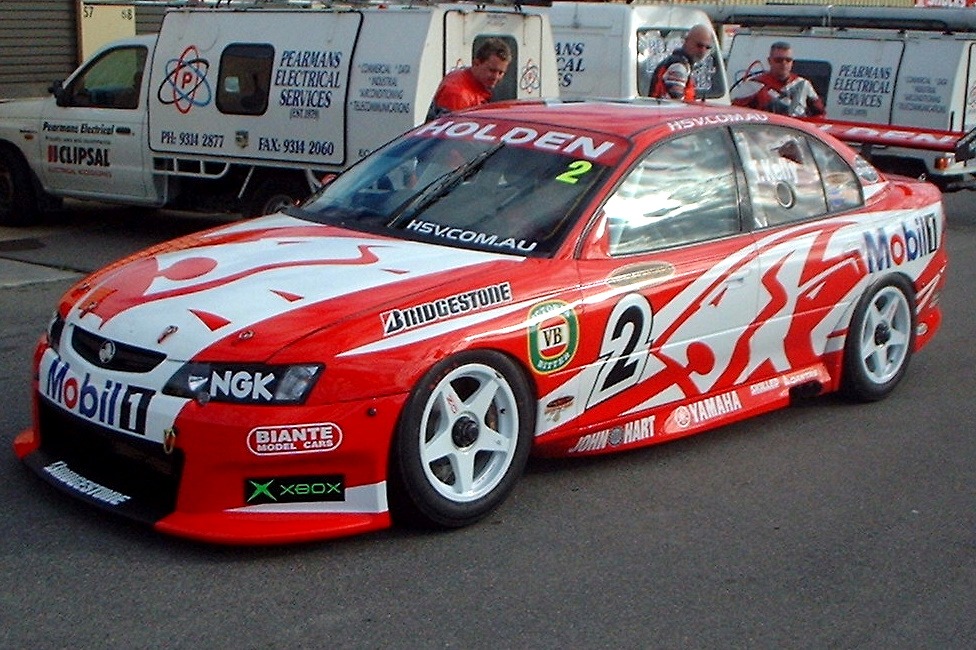Stock car racing is a popular form of automobile racing in the United States. It uses production cars which are customized for racing purposes. The race events are usually done on an oval, paved tracks and racers are pushed to the limits over a great number of laps.
Stock car racing is said to have originated in 1919 to 1933 from illegal operators who needed private cars that are capable of more than ordinary speed to evade the law while transporting liquor. They turned and altered ordinary cars to make them faster. Eventually, these cars were raced for pleasure and it became a popular racing event in the southeastern states.
The largest governing body in stock racing is the National Association for Stock Car Auto Racing or NASCAR. It organizes premiere racing events such as the Daytona 500, Southern 500, and Sprint Cup Series.
History of Stock Car Racing
The story of stock car racing is as American as it gets, intertwined with the nation’s history and technological progress. Stock car racing began in the Southern Appalachians from good old boys transporting a lot of illegal moonshines using their souped-up ’34 Fords. They were trying to get away from the revenue agents while driving without headlights along dark roads at speeds exceeding 120 miles per hour. Their goal was to prove who had the fastest car.
This led to weekend races at tracks which were carved out of meadows and corn fields. During the 1930s, these whiskey cars began to race at local fairgrounds and racetracks. Their drivers, celebrated for their driving skills, drew crowds of thousands, transforming these gatherings into spectator sports. It was during this time that the link between speed, cars, and entertainment was solidified.
In 1948, Bill France saw the need to formally organize the race. That was the time the National Association for Stock Car Auto Racing (NASCAR) was founded which is the motorsport’s well-known stock car racing organization. After many years, stock car racing has evolved from drivers who raced for gas money on tracks to millionaire owners and drivers who raced at tracks across the country.
Today, stock car racing annually draws ten million fans in America. Its fans are also loyal to the brands their favorite driver is sponsored by. For example, if their favorite driver is sponsored by a soft drink producer, that will be the product they’ll buy. Its events are also covered by the media. In fact, every Nationwide Series, NASCAR Sprint Cup, and Camping World Truck Series race is televised.
Understanding the Basics of Stock Car Racing
Stock car racing, at its core, is about high-speed, wheel-to-wheel action on oval tracks. But what exactly is a stock car? Originally, it referred to an automobile that hadn’t been modified from its factory configuration. However, as the sport evolved, the term came to mean any production-based automobile used in racing. Today’s stock cars, while they might resemble the standard American family sedan, are anything but ordinary. They are purpose-built racing machines, designed to push the limits of speed and endurance.
The races typically unfold on oval tracks, which are classified based on length. There are short tracks (less than a mile), speedways (1 to 2 miles), and superspeedways (over 2 miles). The design of these tracks – with three or four turns, all to the left – influences the racing strategy and the design of the cars themselves. Stock cars are much heavier than Formula One cars, and as a result, they can’t produce the same g-forces. This makes stock car racing a unique blend of raw power, strategy, and driver skill.
One of the most distinctive aspects of stock car racing is the emphasis on close competition. Races often see cars racing side by side at speeds up to 200 mph. This proximity is not just a test of speed, but of nerve and skill, as drivers maneuver inches apart from one another, lap after lap.
While stock car racing might seem straightforward, the strategy involved is complex. Drivers and teams must consider factors like tire wear, fuel consumption, and pit stop timing, all while navigating through a field of competitors. It’s this blend of technical skill, strategy, and sheer bravery that makes stock car racing one of the most popular motorsports in America.
Technology and Cars in Stock Car Racing
The evolution of technology in stock car racing is a story of relentless innovation and adaptation. From rudimentary machines designed for straight-line speed to the highly sophisticated racing vehicles of today, stock car technology has come a long way.
The Evolution of the Stock Car
In the early days, stock cars were little more than regular street cars with few modifications. As the sport grew in popularity and competitiveness, so did the need for better, faster, and safer cars. This led to significant advancements in car design and engineering.
Modern Stock Cars
Today’s stock cars are marvels of engineering. Far from their ‘stock’ origins, these cars are custom-built for racing. Every component, from the chassis to the engine, is designed to maximize performance, durability, and safety. The bodies are made of sheet metal, covering a steel roll cage that protects the driver. Despite their resemblance to production cars, these machines are built from the ground up for racing.
Power and Performance
Under the hood, stock cars are equipped with powerful V8 engines, capable of producing 750 to 800 horsepower. This raw power is crucial for achieving top speeds on the tracks. However, with great power comes the need for control. Suspension systems, brakes, and tires are all specially designed to handle the extreme conditions of racing, from high speeds to the intense lateral forces experienced on turns.
Aerodynamics
Aerodynamics play a critical role in modern stock car racing. Teams spend countless hours fine-tuning the aerodynamic profile of their cars to reduce drag and increase downforce, crucial for maintaining speed and stability on the track.
Safety Innovations
Safety is paramount in stock car racing. Innovations like the HANS device (Head and Neck Support), SAFER barriers on tracks, and advanced fire suppression systems have significantly increased the safety of the sport. These developments have come from a mix of hard lessons and a commitment to protecting drivers at all costs.
A Blend of Tradition and Technology
While technology has transformed stock cars into high-tech racing machines, the sport still retains its traditional roots. The emphasis remains on driver skill and team strategy, ensuring that stock car racing continues to be a thrilling, fan-favorite motorsport.
Stock Car Racing Classes
Stock car racing has different classes and each of them has slightly different rules.
Street Stock and Pure Stock
Street stock car racing is consisting of only street vehicles which can be bought by the general public. It is sometimes referred to as hobby stock, showroom stock, or U-car racing.
Super Stock
This stock class is similar to street stock but it allows more engine modifications to cars. Automobiles in this class usually have a power output in the range of 500 to 550 horsepower and their tires’ width are limited to 8 in or 200 mm.
Late Model
This is known as the highest class of stock cars when it comes to local racing. The rules of construction of a late model car depend from region to region or race track to race track. Some of the common variations are super late models, late model stock cars, and limited late models. They can be a custom built machine or a heavily modified street car.
Major Stock Car Racing Series and Events
At the heart of stock car racing lies the National Association for Stock Car Auto Racing, or NASCAR, the most renowned organization in the sport. Founded in 1948 by Bill France, NASCAR has grown from humble beginnings to become a global phenomenon, hosting some of the most exciting and watched races in motorsports.
Stock Car Racing Tracks
The diversity of tracks in NASCAR adds to the complexity and allure of the sport. From the high-speed superspeedways like Daytona and Talladega to the short tracks of Bristol and Martinsville, each venue presents unique challenges and requires different strategies. The tracks’ varying lengths, banking, and surfaces play a crucial role in the outcome of races, making adaptability a key skill for drivers and teams.
Stock car racing usually takes place on oval tracks with 3 or 4 turns to the left. The oval tracks are classified into three: short track which is less than a mile, speedway which is 1 to 2 miles, and superspeedway which is over 2 miles. The race speeds also depend on the track but they are typically 90 miles per hour to over 200 miles per hour.
The circuits used in stock car racing differs from those of rally and Formula One as it does not have rough terrain, sharp turns, and complicated twists and turns. It’s because stock cars are much heavier than Formula One cars, meaning, they are generally slower and they cannot produce the g-forces of an open wheel car.
The NASCAR Series
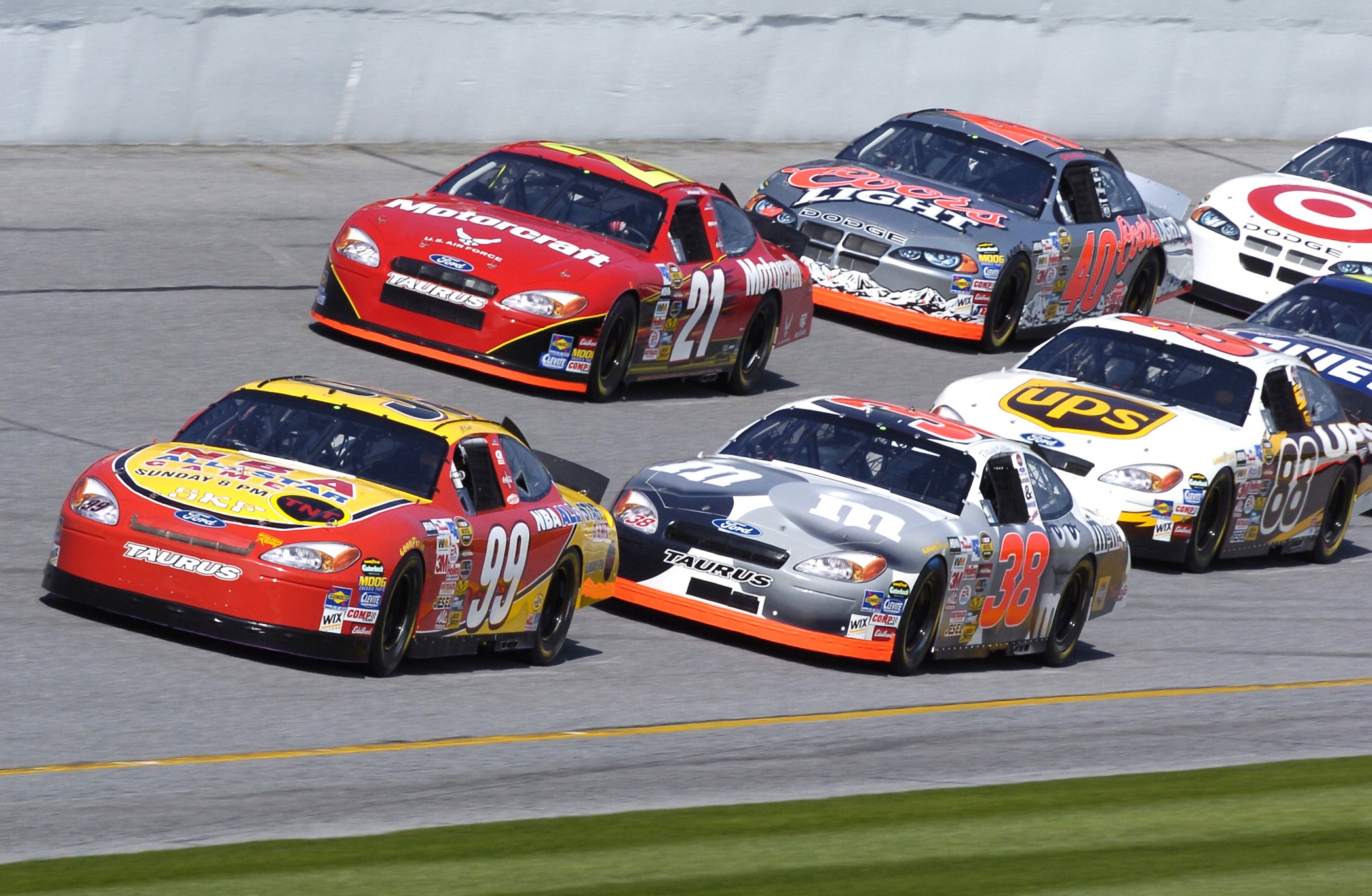
NASCAR’s series are divided into various levels, from local club and regional races to the nationally televised NASCAR Cup Series, the pinnacle of stock car racing. The Cup Series features the most skilled drivers and advanced cars, competing in a season that spans almost the entire year. Other notable series include the Xfinity Series and the Camping World Truck Series, each with its own unique style and following.
Iconic Events
Among the numerous events in the NASCAR calendar, a few stand out for their history, prestige, and the sheer excitement they bring. The Daytona 500, often referred to as “The Great American Race,” is the most prestigious event in NASCAR. Held annually at the Daytona International Speedway in Florida, it’s known for its high stakes and thrilling finishes.
Another key event is the Coca-Cola 600 at Charlotte Motor Speedway, the longest race in the Cup Series, testing the endurance of both drivers and cars. The Brickyard 400 at Indianapolis Motor Speedway and the Southern 500 at Darlington Raceway are also marquee events, steeped in tradition and history.
The Fan Experience
Stock car racing events are more than just races; they are spectacles. Fans flock to these events not only to witness the high-speed action but also to partake in a festival-like atmosphere. With pre-race concerts, fan zones, and interactive displays, NASCAR races offer an immersive experience for motorsports enthusiasts.
Famous Drivers in Stock Car Racing
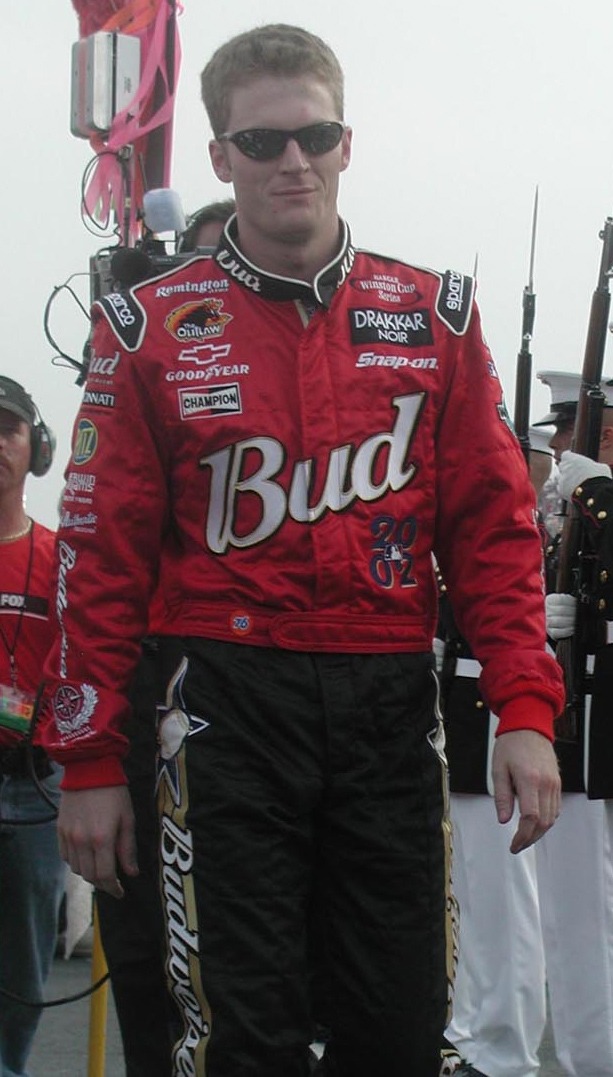
Stock car racing has been graced by many legendary drivers, each leaving an indelible mark on the sport. Their skill, charisma, and competitive spirit have not only won races but also captured the hearts of millions of fans. Let’s take a moment to appreciate some of these icons who have shaped the world of stock car racing.
Richard Petty – “The King”: Richard Petty, affectionately known as “The King,” is a towering figure in NASCAR history. With a record 200 race wins and seven NASCAR Cup Series championships to his name, Petty’s iconic blue #43 car is a symbol of racing excellence. His influence extends beyond the track, making him a true ambassador of the sport.
Dale Earnhardt – “The Intimidator”: Dale Earnhardt, known as “The Intimidator,” was renowned for his aggressive driving style and remarkable tenacity. He won seven Cup Series championships, tying with Richard Petty for the most in the sport’s history. His tragic death in 2001 at the Daytona 500 profoundly impacted the racing world and led to significant safety improvements in the sport.
Jeff Gordon: Jeff Gordon brought a new level of charisma and broad appeal to stock car racing. His career boasts four Cup Series championships and 93 wins, making him one of the most successful drivers in the history of the sport. Gordon’s rivalry with Dale Earnhardt in the 1990s brought a new level of excitement to NASCAR, attracting a wider fanbase.
Jimmie Johnson: Jimmie Johnson, another remarkable talent in stock car racing, has claimed seven Cup Series championships, tying him with Petty and Earnhardt for the most championships won. His consistency and ability to perform under pressure have made him one of the greatest drivers in NASCAR history.
Cale Yarborough: Cale Yarborough was the first driver to win three consecutive Cup Series championships. Known for his fearless driving style, Yarborough accumulated 83 victories, making him one of the most successful drivers in the history of the sport.
These drivers, among many others, have contributed to the rich tapestry of stock car racing. Their stories of triumph, tragedy, and relentless pursuit of speed continue to inspire new generations of racers and fans alike.
Beyond NASCAR – Broader Stock Car Racing
Non-NASCAR stock car racing offers a world of excitement and diversity that often goes unnoticed by mainstream racing media. From the grassroots heroes battling it out on local short tracks to the high-speed thrill of dirt racing and the endurance challenges, there’s a whole other world of stock car racing out there waiting to be explored. Whether you’re a seasoned racing fan or new to the sport, attending a non-NASCAR stock car race is an experience filled with passion, community, and the pure thrill of racing.
The Essence of Stock Car Racing
At its core, stock car racing involves production-based cars modified for high-speed racing. While NASCAR has popularized a specific style of stock car racing, numerous other series and events offer a different take on this exciting form of motorsport. These races happen on various tracks, including short ovals, dirt tracks, and road courses, providing a diverse racing experience.
Regional and Grassroots Racing Series
Much of non-NASCAR stock car racing thrives at the regional and grassroots levels. Across the United States and beyond, local tracks host regular races that are the lifeblood of the stock car racing world. Series like the ARCA Menards Series, which operates under the NASCAR umbrella but maintains distinct rules and a unique identity, offer a platform for up-and-coming drivers.
In Canada, series like the Pinty’s Series showcase stock car racing with a Canadian flair, racing on a mix of ovals and road courses across the country. Australia’s Supercars Championship (formerly V8 Supercars) is another prime example, featuring a calendar that includes the famous Bathurst 1000 race.
The Appeal of Dirt Track Racing
Dirt track racing holds a special place in the world of stock car racing. Events like the World of Outlaws and local dirt track series offer a raw and exciting racing style. Racing on dirt requires a different set of skills and car setup compared to asphalt, leading to dynamic and unpredictable races that are a favorite among many fans.
Endurance Stock Car Racing
Endurance racing adds another dimension to stock car racing, testing the durability of cars and the stamina of drivers. Events like the 24 Hours of Lemons and ChumpCar (now ChampCar) World Series invite teams to race with budget-friendly, production-based cars in endurance races, emphasizing fun and creativity as much as competition.
The Role of Technology
Non-NASCAR stock car racing series often have different rules and regulations regarding car technology and performance. This allows for a broader range of modifications and innovations, from engine tuning to suspension setups. The diversity in car specifications adds an extra layer of excitement and variety to races.
Diversity of Tracks and Cars
Non-NASCAR stock car racing often features a broader range of tracks and car specifications. From road courses to short ovals and dirt tracks, these races challenge drivers with a variety of conditions and requirements, adding to the sport’s diversity.
Global Appeal
Stock car racing’s appeal isn’t limited to the United States. Countries like Canada and Australia have vibrant stock car racing scenes, with series like the NASCAR Pinty’s Series in Canada and the Supercars Championship in Australia drawing large crowds and television audiences.
Cultural Impact and Fan Base of Stock Car Racing
Stock car racing is much more than a series of high-speed races; it’s a cultural phenomenon that resonates deeply with millions of fans across the United States and beyond. The sport’s cultural impact and its passionate fan base are as integral to its identity as the roaring engines and checkered flags.
A Community of Passionate Fans
The heart of stock car racing lies in its fans. Known for their loyalty and passion, these enthusiasts are not just spectators; they are a part of the sport’s fabric. They travel great distances to attend races, decked out in the colors and numbers of their favorite drivers and teams. Their enthusiasm creates an electrifying atmosphere at every event, turning each race into a festival-like experience.
Brand Loyalty
Stock car racing fans are known for their strong loyalty to the brands that sponsor their favorite drivers and teams. This unique aspect of the sport has led to a symbiotic relationship between sponsors, drivers, and fans, with sponsorship deals playing a crucial role in the sport’s economics. For many fans, supporting these brands is another way to show support for their favorite drivers.
Influence on Popular Culture
Stock car racing has left a significant mark on American popular culture. Its influence can be seen in films, music, and even fashion. The sport has inspired movies like “Days of Thunder” and “Talladega Nights,” capturing the thrill and drama of racing. Country music, with its deep roots in the same regions where stock car racing is most popular, often pays homage to the sport in its lyrics and themes.
A Sport for All
Stock car racing prides itself on being a family-friendly sport, with events often tailored to be enjoyable for all ages. From interactive fan zones to pre-race concerts and events, race weekends are designed to be an inclusive experience, fostering a sense of community among fans.
The Role of Tradition
Tradition plays a significant role in stock car racing. From pre-race rituals to the iconic tracks, the sport cherishes its history while continuously evolving. This balance of tradition and innovation is a key reason why stock car racing continues to captivate new generations of fans.
Interesting Facts about Stock Car Racing
Stock car racing is filled with intriguing facts and stories that add to its allure. Here are some fascinating tidbits about this high-octane sport that might surprise even the most avid fans:
- Prohibition-Era Origins: The origins of stock car racing can be traced back to the Prohibition era when bootleggers modified their cars to outrun the police while transporting illegal alcohol. This need for speed and handling gave birth to the skills and techniques that would later define stock car racing.
- First Woman in NASCAR: Sara Christian competed in NASCAR’s first race in 1949, making her the first woman to race in NASCAR’s premier division. Her pioneering spirit opened the door for many female drivers who followed in her footsteps.
- Record-Breaking Speeds: Bill Elliott set an all-time top qualifying speed record of 212.809 mph at Talladega in 1987, a feat that remains unmatched in the history of NASCAR’s premier series.
- A Race Decided After the Fact: The first Daytona 500 in 1959 ended with such a close finish that it took 61 hours to declare Lee Petty the winner, after reviewing photographic evidence.
- Moonshine Connection: Many early stock car racers were former moonshine runners. The skills they honed while evading law enforcement on Appalachian backroads proved invaluable on the racetrack.
- NASCAR’s ‘Win on Sunday, Sell on Monday’ Philosophy: This motto reflects the strong connection between success in racing and car sales in the showroom. Auto manufacturers have long used their racing success as a selling point for their production models.
- Safety Innovations: NASCAR has been a pioneer in motorsport safety, introducing mandatory safety features like the HANS device, SAFER barriers, and advanced fire suppression systems.
- A Global Fan Base: While rooted in American culture, stock car racing has fans worldwide, with NASCAR races broadcast in over 150 countries.
- The Diversity of Tracks: NASCAR races are not limited to one type of track. They are held on a variety of courses, including short tracks, road courses, and superspeedways, each requiring different skills and strategies.
- Economic Impact: NASCAR is a significant economic driver, with billions of dollars in revenue generated annually from races, merchandise, and sponsorships.
Conclusion
Stock car racing is more than just a motorsport; it’s a cultural phenomenon that embodies the spirit of competition and innovation. Its rich history, combined with thrilling races, skilled drivers, and a passionate fan base, ensures its place as a beloved American pastime. Whether you’re a lifelong fan or new to the sport, the world of stock car racing offers an exhilarating experience that’s hard to match.

